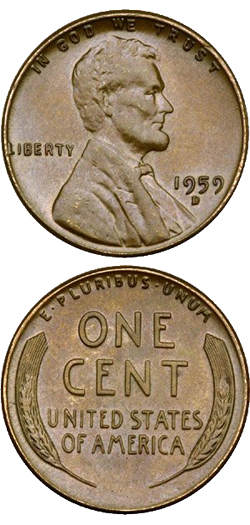|
"Making Cents"
The Signal
Saturday, September 2, 2006
| I |
I had never heard of such a variety. Benson had purchased it from Heritage Coins for a reported $25,000. When he showed the coin to the Professional Coin Grading Service in Newport Beach, they rendered a quick opinion that the coin was a counterfeit. Benson returned the coin to Heritage and got his money back.
A few years later, Heritage sold the coin to Larry Choate, also for a reported $25,000. This time, the coin was submitted to the U.S. Treasury department's Counterfeit Division, and after extensive testing and analysis, they gave the coin a clean bill — stating it was a genuine Mint product. The coin was later submitted for auction in Los Angeles and sold for more than $45,000.
The sale almost was halted when a convicted murderer and counterfeiter in a Utah prison named Mark Hofmann admitted that he had made this very coin, and that it had been confiscated from his home when he was arrested.
Hofmann was serving multiple sentences for murder, counterfeiting and fraud. Among his counterfeits were alleged Mormon documents, a political token advocating Joseph Smith for U.S. president in 1844, and several alleged Mormon forms of early currency.
His exploits were the subjects of a film and several books. His attention to detail had convinced his clients — including dealers and museum curators — that his items were genuine and even of the right age.
He had purchased numerous books of the 19th century and removed the blank pages, which were genuine old paper, and used them to forge letters by Joseph Smith and other early Mormon settlers in Utah. His home-made inks were very close to the original inks used in the mid-1800s. But careful detective work revealed by 1980 or so that his products were fakes.
Since the 1959-D wheatback cent had been attributed by the U.S. Treasury Department and no evidence could be found to link Hofmann to the coin, it was sold, and the catalogue strongly indicated that the sale was final. However, dealers and collectors familiar with Hofmann's faked coins and tokens believe he did in fact make the single specimen, which easily slipped by the detectives collecting evidence in his murder case.
Heritage claimed the coin was brought to them by a Walnut Creek resident who found it in change. The man later told investigators that he bought it from a dealer no longer living in the area. Further investigation showed the man had a Utah connection.
A more detailed Mark Hofmann account is the feature story in the current TAMS Journal, issued by the Token and Medal Society with the headline, "TAMS Member #4006: Now Serving Life for Murder!" For more information, visit TAMS at tokenandmedal.org.
Dr. Sol Taylor of Sherman Oaks is president of the Society of Lincoln Cent Collectors and author of The Standard Guide to the Lincoln Cent. Click here for ordering information.
©2006, THE SIGNAL · ALL RIGHTS RESERVED.

![[Most Recent Quotes from www.kitco.com]](http://www.kitconet.com/images/quotes_special.gif)

